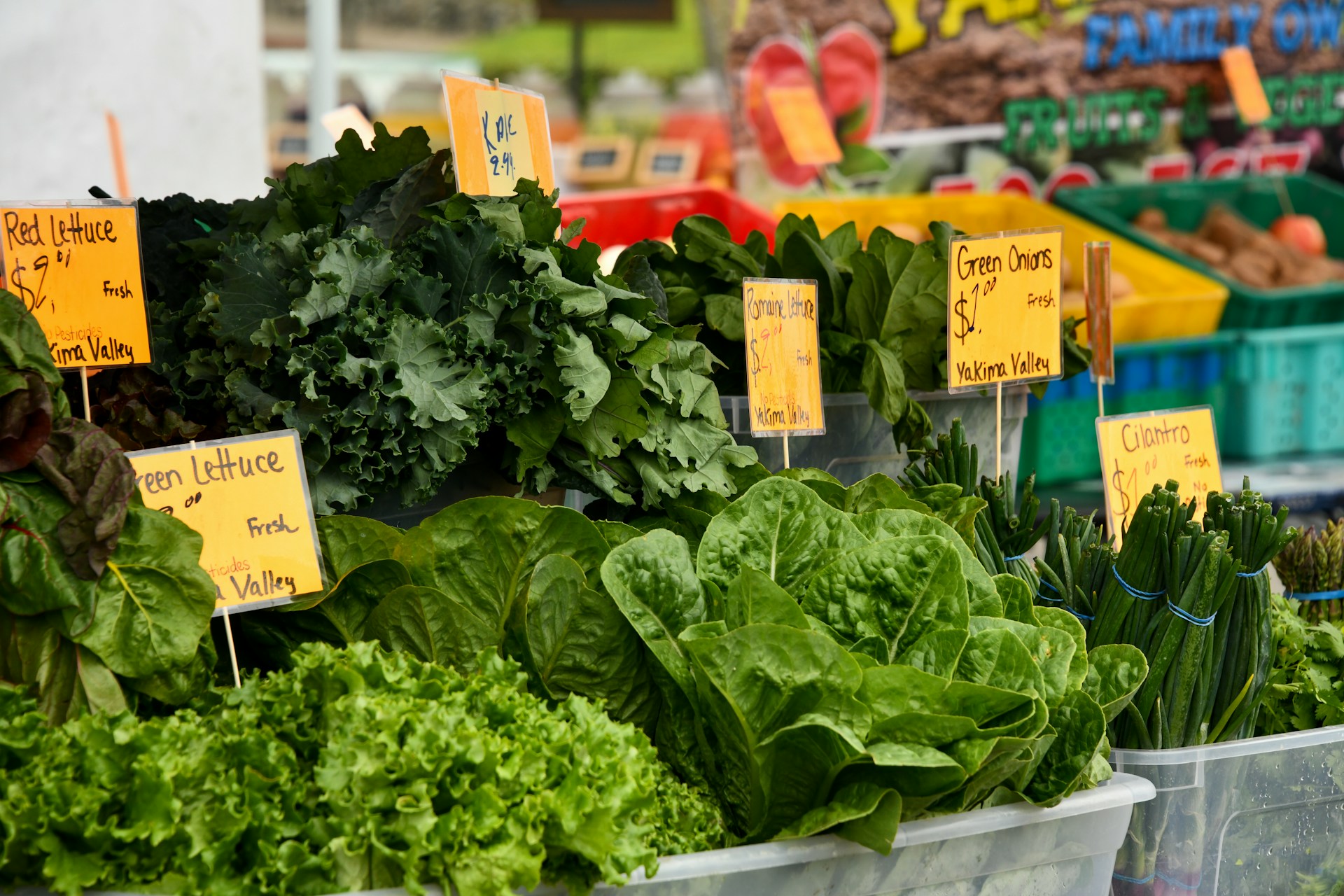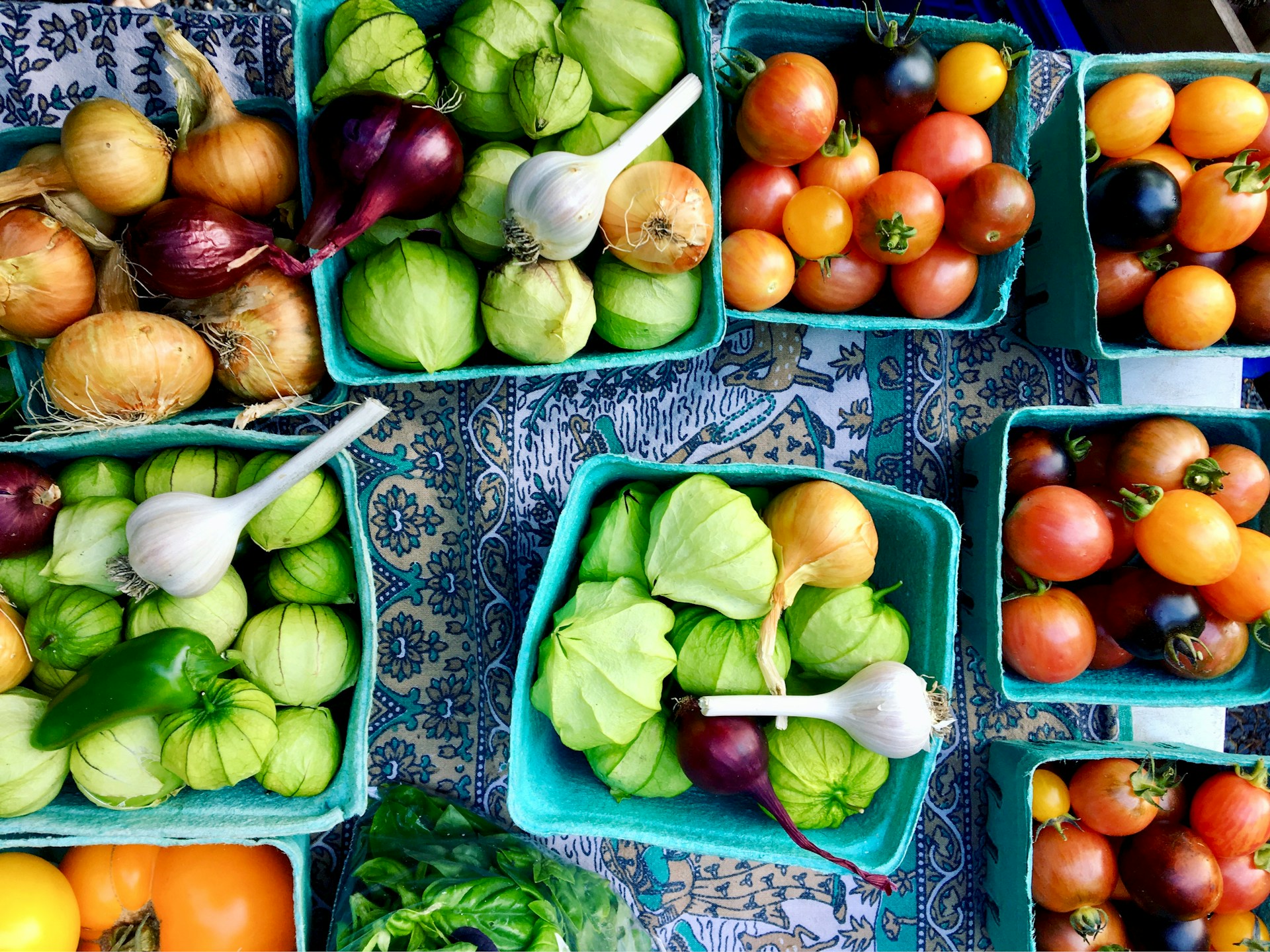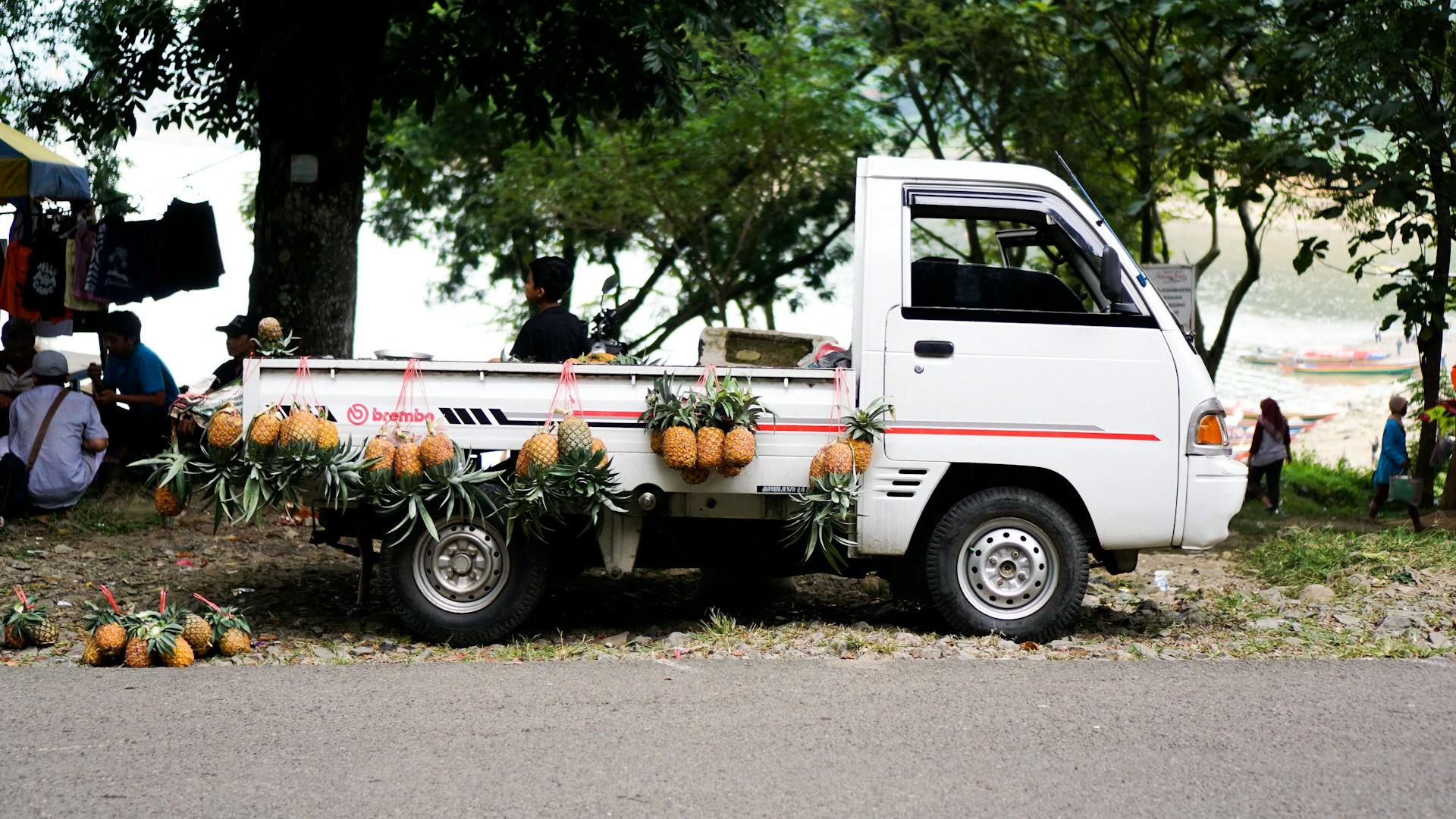Attaining sustainability in global supply chains is an urgent necessity.
With the increasing frequency of climate change discussions, businesses must pivot and adapt to more resilient means of operations.
An essential focal point of these operations is the distribution of produce, a critical link that plays a substantial role in sustainable practices.
However, this sector faces several challenges, from waste reduction to energy-efficient transportation.
It is with a proactive, solution-focused mindset that these difficulties can be addressed.
In this extensive exploration, we delve into practical and innovative approaches towards addressing these sustainability challenges.
Contents
- Solutions To Sustainability Challenges In Produce Distribution
- 1. Implement eco-friendly packaging practices.
- 2. Advance Local Sourcing to Reduce Transport Emissions
- 3. Foster Seasonal Consumption Patterns
- 4. Improve energy efficiency in warehouses.
- 5. Optimize Delivery Routes for Less Fuel Usage
- 6. Reduce Food Waste via Smart Logistics Technology
- 7. Maximize use of renewable energy sources
- The Bottom Line
Solutions To Sustainability Challenges In Produce Distribution
1. Implement eco-friendly packaging practices.
The problem of waste is a key sustainability challenge in produce distribution. Conventional packaging methods can lead to significant resource consumption and waste generation.
However, the implementation of eco-friendly packaging practices has the potential to tackle this issue.
An eco-friendly packaging design strategy involves the use of biodegradable, recyclable or reusable materials, the minimization of packaging, and the use of energy-efficient production methods.
For example, corrugated cardboard boxes made from 100% recycled materials or reusable plastic crates can be used to pack fruits or vegetables, instead of single-use packaging.
There are also innovative plant-based options like packaging made from mushroom mycelium, which can be composted after use.
Also, through eco-design, packaging can be created in a way that simplifies recycling, allows for easy disassembly, or reduces the number of different materials used, making it easier for waste management companies to recycle.
In addition, some companies have started to offer refillable packaging at their retail locations, encouraging consumers to bring their own containers and thereby reduce packaging waste.
Green packaging practices can not only enhance a company’s environmental sustainability but can also reduce costs in the long term.
Reduced waste means less garbage pickup and fees, and using lighter, less material can decrease transportation costs.
Fewer materials also lend to less manufacturing costs, and being eco-friendly can enhance a company’s brand image and attract customers who value sustainability.
Despite these potential benefits, some barriers may prevent companies from implementing eco-friendly packaging practices.
These include concerns about the higher upfront costs of sustainable materials, perceived lack of robustness compared to conventional packaging, or the lack of recycling facilities for certain types of biodegradable or compostable packaging.
However, these barriers can often be addressed through continuous research and innovation, government policy support, and consumer education.
Ultimately, implementing eco-friendly packaging practices is only one piece of the puzzle in addressing sustainability challenges in produce distribution. It should always be complemented with other strategies such as reducing transport emissions, optimizing delivery routes, improving energy efficiency in processing and storage facilities, and reducing food waste.
Each of these components together can significantly contribute to a holistic and sustainable produce distribution system.
2. Advance Local Sourcing to Reduce Transport Emissions
The global produce industry faces the significant challenge of transport emissions.
Transporting produce from areas where they are grown, often thousands of miles away, to where they are consumed leads to a high carbon footprint.
One solution to addressing this sustainability challenge is advancing local sourcing.
Through local sourcing, the distance from the farm to the consumer is drastically reduced.
With shorter distances for transport, the related carbon emissions are significantly cut down.
Moreover, local sourcing can also boost local economies by providing jobs and supporting farmers.
Besides reducing carbon emissions, advance local sourcing also encourages community engagement and development.
This approach also has a positive impact on the shopping experience, as consumers increasingly appreciate knowing where their food comes from and supporting local producers.
However, adopting local sourcing as a sustainability solution in produce distribution is not without challenges.
Logistical issues, such as ensuring a consistent supply of produce, require careful planning and collaboration.
Moreover, smaller local farms might lack the infrastructure and mechanisms to effectively participate in larger distribution networks.
In addressing these challenges, it is crucial to develop support systems for local farms such as subsidized training, access to sustainable farming technology, and inclusive supply chains.
Furthermore, legislation that encourages local sourcing through incentives and subsidies can be a powerful driver in overcoming these hurdles.
Partnerships between large distributors and local farms can also foster the exchange of knowledge and resources, driving sustainability from both ends of the supply chain.
Overall, advancing local sourcing is a multifaceted approach that can significantly reduce transport emissions associated with produce distribution, while also fostering economic growth and community involvement.
It is a demanding but rewarding journey towards a sustainable and resilient produce distribution network.
3. Foster Seasonal Consumption Patterns
The proposition to foster seasonal consumption patterns stands as a significant solution to sustainability challenges in produce distribution.
The concept revolves around promoting the consumption of fruits and vegetables that are in season rather than those grown in off-seasons and usually involve a considerable amount of energy in their production.
Fruits and vegetables, when consumed in their natural seasons, bring in an array of economic, environmental, and health benefits.
The practice of eating seasonally contributes to reducing the carbon footprint associated with long-distance transportation and refrigeration of out-of-season produce.
On the economic front, seasonal consumption supports local farmers, enriching the local economy by providing jobs and helping them stay competitive.
Environmentally speaking, seasonal produce usually requires less artificial help to grow, meaning fewer uses of harmful pesticides and fertilizers, contributing to a decrease in water and soil pollution.
Moreover, since these items are grown in their natural habitat during the right season, they need less energy for growth, which reduces the amount of greenhouse gas emissions.
Encouraging seasonal eating habits also ensures the products do not have to travel long distances to reach consumers, helping reduce transportation emissions.
From a health point of view, seasonal fruits and vegetables are usually fresher, tastier, and more nutritious as they are harvested at their peak of ripeness.
This improved taste and nutritional value can encourage more people to consume fruits and vegetables, leading to healthier communities.
The challenge lies in fostering a change of consumer attitudes and habits towards seasonal produce and developing a deeper understanding and connection with food.
Raising awareness about the environmental consequences of consuming out-of-season produce is one way to affect this change.
Another strategy is to make seasonal produce more accessible and affordable for consumers by collaborating with local farmers, harnessing technology, reducing wastage, and optimizing the supply chain.
Governmental entities and businesses can also play a role by implementing policies and campaigns that promote the benefits of seasonal eating.
Such integrative efforts can ensure sustainable food systems that can serve as a model for other sectors looking to improve their environmental stewardliness.
Overall, fostering seasonal consumption patterns stands as an effective and valuable solution to achieve sustainability in the production and distribution of fruits and vegetables.
4. Improve energy efficiency in warehouses.
Warehouses consume a considerable amount of energy, with lighting, heating and ventilation, and machinery usage as the primary factors.
Improving the energy efficiency of these facilities is a crucial step towards developing sustainable produce distribution.
Efforts should begin with a well-conducted energy audit to identify areas of wastage and inefficiencies.
Investing in advanced, eco-friendly technologies and tools that optimize energy use can significantly improve warehouse energy efficiency.
For example, energy-efficient lighting systems such as LED or compact fluorescent light bulbs consume less power and have a longer lifespan than traditional lighting systems.
Similarly, machinery used in warehouses such as forklifts and conveyor systems can be upgraded to more energy-efficient models.
Additionally, warehouse design matters too, where naturally-lit facilities can drastically reduce energy consumption during daytime.
Next, the heating, ventilation, and air conditioning (HVAC) systems play a significant role in terms of energy use.
Upgrading to more efficient HVAC systems or improving insulation to reduce energy loss significantly impact energy savings.
A greater reliance on renewable energy sources, such as solar panels or wind turbines, for warehouse operations could be a sustainable way to meet energy needs.
Initiatives such as the use of energy management systems can further contribute to this goal.
These systems ensure regular monitoring and optimization of energy use in the warehouse, promoting energy awareness among employees.
A well-maintained warehouse that stresses on its equipment’s routine servicing and upkeep also assists in preventing energy wastage.
Above all, educating workers about the importance of energy conservation and implementing energy-saving practices is instrumental in driving energy efficiency.
Indeed, the improvement of energy efficiency in warehouses is not an one-off task but a continuous process that requires commitment and strategic planning.
Overall, accelerating the transition to energy-efficient warehouses is a viable solution towards addressing sustainability challenges in produce distribution.
5. Optimize Delivery Routes for Less Fuel Usage
One strategy that can contribute to sustainable produce distribution is to optimize delivery routes for less fuel usage.
While this may seem like a minor factor, when multiplied by the thousands of delivery trucks that are out on the roads each day, even a small reduction in fuel consumption can have a significant impact on greenhouse gas emissions.
According to a study by the National Renewable Energy Laboratory, routing optimization can lead to fuel savings of up to 13%.
This can be achieved through the use of logistics technology that utilizes sophisticated algorithms to calculate the most efficient routes.
By doing this, the total distance traveled by delivery trucks can be minimized, reducing both fuel consumption and carbon emissions.
Optimizing delivery routes using advanced technology not only has the potential to significantly reduce fuel consumption and greenhouse gas emissions, but it can also lead to improved efficiency in general.
This approach also helps in reducing traffic congestion, thus improving air quality in cities.
It also enables companies to adhere to strict delivery time frames, leading to increased customer satisfaction.
Moreover, it reduces the wear and tear on vehicles, thereby prolonging their lifespans and reducing the environmental impact associated with vehicle manufacturing and disposal.
Further, an optimized route could also mean a decline in the requirement for more drivers, hence decreasing the overall operational costs.
Use of electric and hybrid delivery trucks, in combination with route optimization, could lead to even greater reductions in emissions.
There are various kinds of software available in the market that can help distributors in optimizing their delivery routes.
Despite the evident advantages, there might be some challenges to optimizing delivery routes for less fuel usage.
Costs associated with implementing and maintaining these systems could be high, especially for smaller businesses.
However, these costs could be offset by the potential savings in fuel expenses, reduced vehicle maintenance costs, and improved customer satisfaction.
Therefore, optimizing delivery routes for less fuel usage is a strategy that has the potential to bring significant sustainability benefits to the logistics and distribution sector.
6. Reduce Food Waste via Smart Logistics Technology
It is an undeniable fact that food waste has severe impacts on sustainability in the produce distribution system and immediate action is needed.
By integrating smart logistics technology, we can address this alarming issue effectively.
Logistics technology can provide ways to optimize the storage, handling, and distribution of produce to reduce food spoilage and wastage.
Investing in wide-ranging, innovative technologies such as radio frequency identification (RFID) tagging, real-time tracking, and temperature-controlled supply chains can minimize food waste significantly.
RFID, in particular, allows for the precision tracking of individual items, providing real-time visibility into the state of produce from the source to the consumer.
Temperature-controlled supply chains or ‘cold chains’, on the other hand, maintain optimal conditions for produce, preventing wastage from occurring due to spoilage.
Tapping into smart logistics technologies can drastically reduce the level of food waste, contributing immensely towards sustainability.
This not only bolsters your bottom line by minimizing losses but contributes meaningfully to global sustainability efforts by reducing greenhouse gas emissions associated with food wastage.
Further to these benefits, the implementation of smart logistics can dramatically increase the efficiency of produce distribution.
Adopting technology in logistics can help predict demand patterns, enabling better forecasting, and effective warehouse space utilization.
This can eliminate the need for overstocking and support the better rotation of stock to ensure that produce is sold while it’s still fresh and attractive to consumers.
Using real-time inventory management systems, much-needed transparency in the supply chain can be achieved, enabling faster reactions to sudden changes in demand or supply.
This is crucial in improving customer satisfaction and trust, leading to more loyal customers and reliable supply chains.
The digitization of the supply chain process by implementing a smart logistics system is going to be a significant boost in achieving sustainability in the produce distribution sector.
Undoubtedly, the implementation of smart logistics technology holds incredible promise and potential in addressing the sustainability challenges in produce distribution.
By embracing this transformative technology, we can successfully align our business operations with the pressing sustainability requirements of today’s world.
7. Maximize use of renewable energy sources
Maximizing the use of renewable energy sources is an efficient solution to sustainability challenges in produce distribution.
Companies can consider a range of renewable energy sources, like wind, solar, hydro, geothermal and bioenergy, for their operational needs.
One of the most popular renewable sources in the industry is solar power.
Installation of solar panels on warehouses, distribution centers, and even vehicles can significantly reduce the energy consumption.
Moreover, by implementing solar panels, produce distribution companies can become partially or entirely self-sufficient in terms of electricity usage.
This not only helps in reducing energy costs but also, more importantly, cuts down on the carbon emissions associated with traditional power generation methods.
Wind energy is another renewable source that can be effectively harnessed for operations.
Large-scale wind turbines, as well as smaller windmills, can serve as a reliable power source for warehouses and distribution centers located in windy areas.
In addition to solar and wind energy, biogas can also serve as a relevant renewable energy source for produce distribution.
Organic waste from produce can be converted into biogas through the process of anaerobic digestion.
This can be used to power vehicles or provide heat for warehouses.
Utilizing these renewable energy sources not only enhances the sustainability of the company but also provides it with a competitive advantage.
A growing number of customers are now valuing sustainability and environmentally conscious operations in their choice of companies.
Therefore, maximizing the use of renewable energy sources can result in not just cost savings and decreased carbon footprints, but also in increased business opportunities.
Overall, adopting renewable energy in produce distribution significantly contributes to the goal of sustainable business operations.
The Bottom Line
Adopting sustainable practices in business operations not only aids in preserving the environment, but it also helps in optimizing operational costs over the long term.
Prioritizing eco-friendly packaging practices, advancing local sourcing to curtail transport emissions and fostering seasonal consumption patterns all contribute to this end.
Efficiency is also key; this can be achieved by improving energy use in warehouses, optimizing delivery routes for lower fuel usage, and minimizing food waste with the aid of smart logistics technology.
Most significantly, shifting towards renewable energy sources affirms commitment to sustainability.
Therefore, it is essential that businesses imbibe these practices as they journey towards a more sustainable future.




